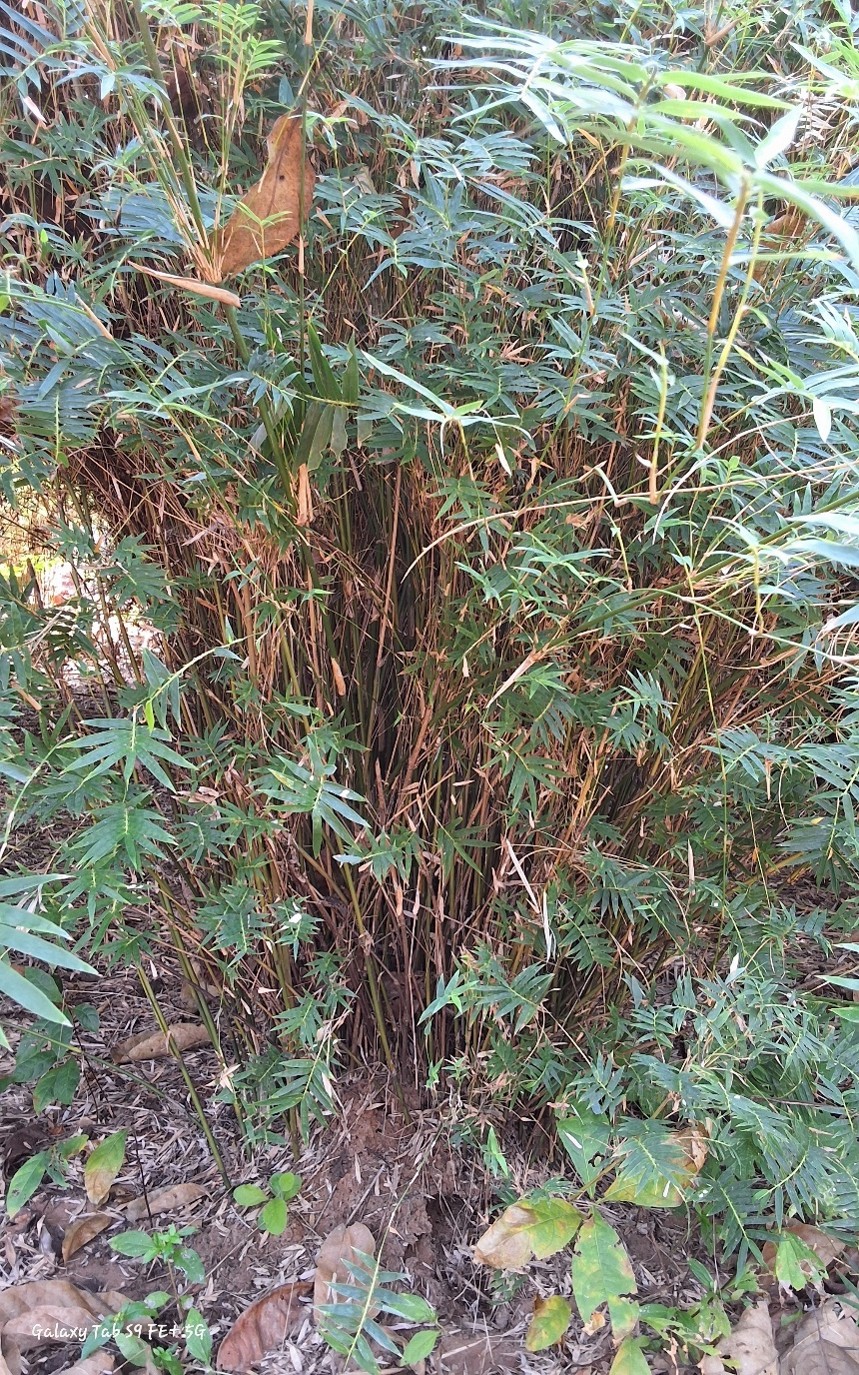Pseudosasa japonica

Pseudosasa japonica
Pseudosasa japonica commonly known as Japanese Arrow Bamboo in English and ヤブ竹 (Yabu-take) in Japanese, is also referred to as 日本竹 (Rìběn zhú) in Chinese, Yabudake in Japanese, and Hangang Juk in Korean. Native to Japan, Korea, and parts of China, this bamboo species has been introduced to other parts of Asia and Europe primarily for ornamental purposes.
Pseudosasa japonica is a clumping bamboo that grows in a dense, non-invasive manner. It typically reaches a height of 2 to 3 meters and has a diameter of 1.5 to 3 cm. The culms are green, gradually turning yellowish-brown as they mature. The internode length ranges from 10 to 20 cm, and the culm sheath is green when young and deciduous. The adaxial surface of the culm is smooth and glabrous, while the abaxial surface is covered with light brown hairs. The margins of the sheath are ciliate.
The leaves of Pseudosasa japonica are lanceolate to oblong in shape, measuring 8 to 12 cm in length and 1.5 to 3 cm in breadth. They have a glossy, dark green texture with prominent veins, adding to the plant’s ornamental value.
This bamboo species thrives at moderate altitudes, ranging from 100 to 1,500 meters above sea level. It prefers well-drained, slightly acidic to neutral soils, and grows best in sandy loam to clay loam soils with good water retention.
The inflorescence of Pseudosasa japonica consists of small, spicate panicles. The flowering glumes are greenish to yellowish and have bracts at the base of each spikelet. The stamens are 3 to 6, typically exserted, with visible anthers. Flowering occurs infrequently, with a long flowering cycle of 30 to 50 years, and is rarely observed. When it does flower, it is reported sporadically in Japan and other regions. The seeds are small, light, and wind-dispersed, though seed germination is slow, often requiring stratification or specific conditions to successfully germinate.
Pseudosasa japonica is primarily propagated through culm cuttings, which root easily in moist soil, or by clump division, which encourages faster establishment. Propagation by seed is rare due to the infrequent flowering events.
This bamboo is widely valued for its ornamental qualities, making it a popular choice for gardens, landscapes, and hedges. Its dense growth habit makes it an ideal plant for use as a fencing or screening material in urban and suburban settings. It is also used in traditional crafts, such as the making of baskets, mats, and woven items in its native regions. In addition, Pseudosasa japonica is effective for erosion control, particularly along slopes and riverbanks, thanks to its dense root system that helps prevent soil erosion.
In summary, Pseudosasa japonica is a versatile and aesthetically pleasing bamboo, ideal for ornamental landscaping, privacy screening, and erosion control. It’s easily propagated through culm cuttings and clump division, though its slow seed germination due to infrequent flowering limits its propagation by seed.
Listen Audio:
Need assistance? BRTC Faculty